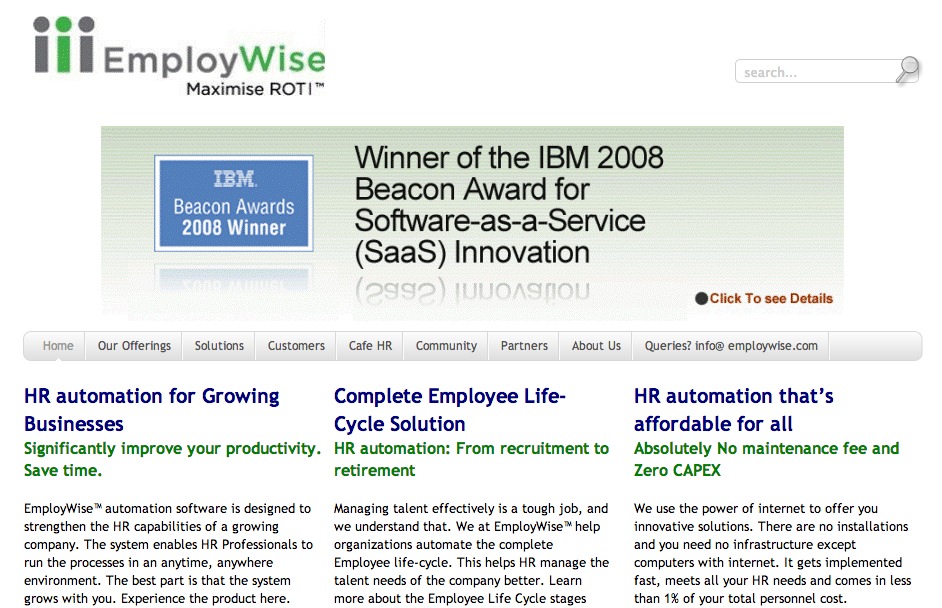Effective employee lifecycle management is acquiring importance from a talent acquisition and retention perspective; from an employee satisfaction angle; as well as from a compliance and regulatory viewpoint. Many organizations, especially SMEs, are discovering to their dismay that the pile of unstructured employee data they have accumulated is a ticking time bomb. They suspect they are paying a price for poor record maintenance and employee management, but are not sure of the exact cost, or its implications.
The impact of poor employee lifecycle management could vary, but often includes an inability to quickly sift through granular employee records and performance metrics with any degree of confidence. This leaves organizations open to violation of immigration norms, wrongful termination charges, industry and local jurisdiction compliance penalties, productivity loss, fraud through inaccurate claims, growing recruitment costs, loss of assets and brand reputation through poor separation processes, etc. The problems become complex when the business grows from single proprietor to multi-unit operators across geographies.
But what’s an SME to do? Human resource management takes years to be codified. Processes around HR management (compensation and benefits, leave, attendance, travel, expenses, reimbursement, performance, hiring, learning and development, separation) and workflow can have gaps and leakages for years without being noticed. Replicating them across units with any degree of accuracy and consistency is a frustratingly uphill mission.
The problem is so large that it has drawn a number of entrepreneurs to try and solve it using technology and automation. With newer business models such as SaaS, pay-as-you-go technologies like cloud and anywhere-anytime access over mobile channels, the solutions are not only looking good, but are increasingly becoming affordable.
Which presents the single biggest problem to entrepreneurs trying to solve the problem: what’s the differentiator? Why should an organization opt for Solution A over Solution B, C, D….Z?

 Sumeet Kapur, CEO of EmployWise an employee lifecycle management solution, took the long route to the answer. “Human relationships are very different from handling materials,” says Kapur, “People have names, not product codes. Human beings have memories and you have to treat each one as a segment of one.” EmployWise took this core philosophy and engineered it into their product. An early version of the product was launched in 2004 as Kapur and his team realized that India was turning into a service economy and employee lifecycle management would gain increasing attention. By 2008 EmployWise was officially launched. Today, the 9 modules of the product appear easy to use, can be integrated with existing HR management technologies (SAP, PeopleSoft etc) and giving instant access to best practices in a hosted pay-per-use-per-employee-per-module SaaS model.
Sumeet Kapur, CEO of EmployWise an employee lifecycle management solution, took the long route to the answer. “Human relationships are very different from handling materials,” says Kapur, “People have names, not product codes. Human beings have memories and you have to treat each one as a segment of one.” EmployWise took this core philosophy and engineered it into their product. An early version of the product was launched in 2004 as Kapur and his team realized that India was turning into a service economy and employee lifecycle management would gain increasing attention. By 2008 EmployWise was officially launched. Today, the 9 modules of the product appear easy to use, can be integrated with existing HR management technologies (SAP, PeopleSoft etc) and giving instant access to best practices in a hosted pay-per-use-per-employee-per-module SaaS model.
At the moment EmployWise uses SMS to stay mobile, making it unnecessary to deploy fancy smart phone apps. In an Indian context, especially in relation to SMEs, this may appear to be a wise strategy – but one that is unlikely to remain a strength for long. Smart phone costs are coming down and SMEs have very compelling reasons to opt for mobile technologies. Mobile banking, communication, inventory management, sales tools, even mobile credit card payments etc are becoming affordable for SMEs over smart phones. Why would they want to remain with clunky SMS for HR? EmployWise must address this quickly if they are to remain relevant in a scenario where smart phones are already dominating.
The advantages of software products such as EmployWise extend to the ability to have one source of truth, they obviate the need for secondary data entry for analysis, empower employees through a self-service model, reduce the HR : employee ration to as much as 1 : 400 and allow companies to benchmark practices with those of their peer group. The last really depends on the density of customers EmployWise has within any given industry. At the moment, the company has 75+ customers – many from technology — and handles 32,000 employee records. The number is adequate to provide reasonable insights, especially in the technology sector where 40 to 60 per cent of the investment is in people – and where managing them well can produce quick ROI.

